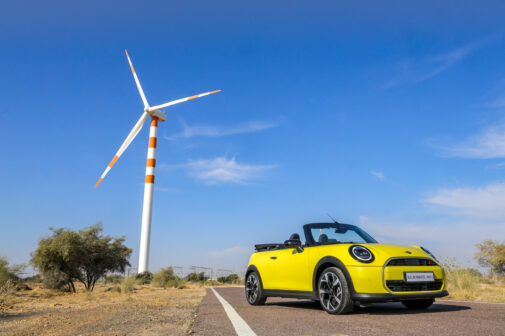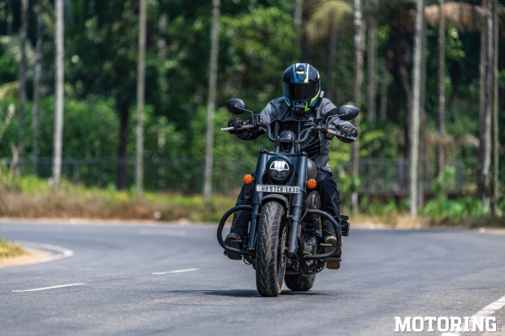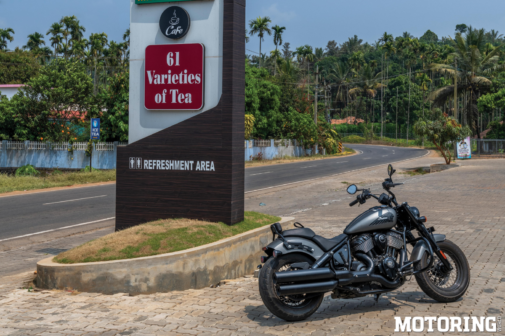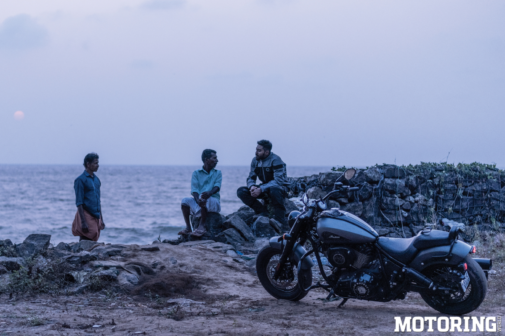History is filled with goof-ups, coincidences and sometimes events of sheer dumb luck that went on to shape cultures, traditions and much more. Case in point being the Indian misnomer that the explorer Christopher Columbus gave to the native people of the Americas. Thinking he had made it all the way to the eastern shores of Asia, Columbus mistakenly called the indigenous inhabitants of the little Caribbean island where he first set foot on, Indians. Columbus was gravely mistaken, as explorers and cartographers soon discovered, yet his error continues to this day when the term ‘Indian’ is casually used to refer to indigenous people across the Americas.
India, which at the time was taken for granted as all of southern and eastern Asia, was a rather general expression in the minds of Europeans. How commodities were shipped from the East had something to do with this blurry mental geography. Europeans tended to believe that all of these Asian commodities originated in India since the wealth of China, Japan, and other Southeast Asian islands were first transported to ports on the southern edge of the Indian subcontinent before being sent elsewhere. It was essentially a gateway to all the coveted spices, silk and more!
Columbus set sail with a passport from his sponsors, Ferdinand and Isabella of Spain, declaring that he represented them on his voyage toward the regions of India. The trouble he caused once he landed in what he thought was India is a story best saved for another day. On his return to Europe, he was still convinced that he had found India. Soon enough it had become pretty clear that Columbus had missed India by a long shot. However, despite the debunking of Columbus’s ‘India’ myth, Europeans continued to refer to the indigenous people of the Americas as Indians.
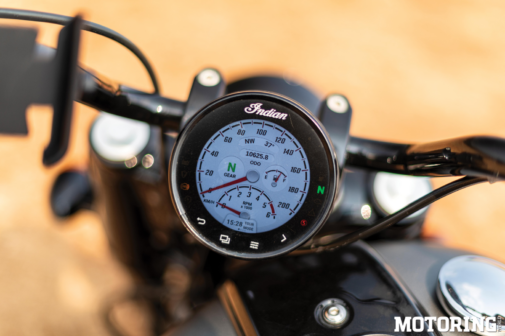
That is right about where the Indian Motorcycle Company comes in. Tracing its origins back to 1901, the Indian Motorcycle Company carries a name born of the Indian misnomer, courtesy of Columbus. Considered to be one of America’s oldest two-wheeler manufacturers, and for quite a while, America’s favourite manufacturer, It has seen quite a tumultuous history — from various land speed records to a significant presence in the First World War, too. It has also seen a short tryst with Royal Enfield, when Indian Motorcycle imported Enfields, customised them and sold them under Indian branding. Talk about badge engineering, eh?
Alright, so now that I am finally done with that history lesson, let’s talk about our journey to Calicut riding an Indian. To be more specific, the Indian Chief Bobber Dark Horse, from Bangalore all the way to Kappad (Kappakaduvu) beach. Why Calicut, you ask? Well, that would be because Calicut is where the Portuguese explorer Vasco Da Gama first made landfall in India. He was the first European to actually reach India by sea, unlike our misinformed friend Columbus. Establishing a very successful trade route by sea, making three voyages to India and becoming the Governor of Portuguese India, he was well celebrated.
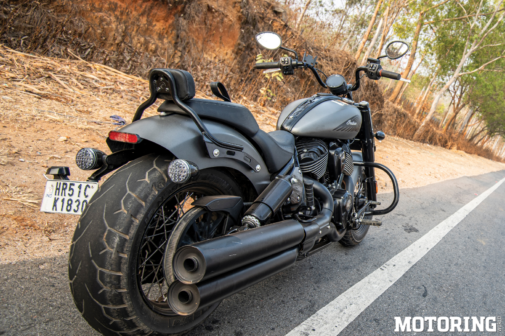
Our journey started from the heart of Bangalore, and I kid you not, most of the rumours about traffic being miserable are true. Manoeuvring a well-endowed motorcycle like the Chief Bobber, weighing around 315 kg with a massive air-cooled 1890cc V-twin engine, through bumper-to-bumper traffic is not the ideal start to any journey, but it is what it is I guess. Once we hit the open highway though, I was singing a totally different tune. The amount of power and refinement of the Thunderstroke 116 engine really managed to shine through. It stays true to the American concept which says, ‘Why reduce weight when you can always put a bigger engine in it?’
We made short work of the stretch from Bangalore to Mysore, passing through Ramanagara, Mandya and Srirangapatna, and it was quite a good stretch of highway too. Quite a lot of heads were turned and going by the number of conversations we had at fuel stations, quite a bit of ffuel burnt. Frankly speaking, with a motorcycle like this, fuel efficiency should be the last thing on your mind, or is it the other way around (maybe that’s why the Americans are on a constant lookout for countries with an abundance of oil)? Anyway, once we touched down in Mysore, my auto-pilot system took over. I was in home territory and I made a beeline to my old haunts before heading home to roost after a hearty meal.

Early the next morning we set out with the intention of passing through Nagarahole Tiger Reserve and spotting some wildlife, but as luck would have it, two-wheelers were now banned from entering the reserve. We were re-routed through another passage that ran somewhat parallel to the Kabini River before crossing the border into Kerala. Once we made that transition into God’s Own Country, the roads felt so good, with plenty of twisties as we entered Wayanad. With the sweet aroma of coffee flowers abundant in the air, the hill station is known for coffee, tea, and various exquisite spices. Exactly what the Europeans had come looking for, so we were on the right track.
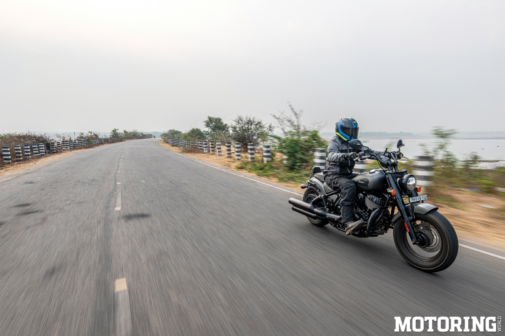
The Chief Bobber Dark Horse is quite an enjoyable motorcycle in itself. It is powerful, has a mean road presence and sounds quite beastly, if I may say so. It handles beautifully and gives the rider a pretty involving experience altogether. It gets multiple ride modes that play around with the throttle response and power delivery as per the rider’s demands. It does carry a lot of heft, and that can be felt throughout, along with a little bit of vibration in the footpegs towards the higher end of the rev band. Other than that the suspension setup has very limited travel, because, of course, it is a bobber.

From Wayanad, we headed straight for Calicut, but we had to pass through a lot of roads that were under construction. That is where the stiff suspension along with the seating position of the Chief Bobber Dark Horse felt most uncomfortable. I have to reiterate the fact that this motorcycle was built for the long open multi-laned highways, and hence doesn’t really shine on the broken tarmac of a developing country. The irony is that even though such highways exist in India, the motorcycle itself isn’t allowed to ply on it.
We finally managed to touchdown at Kappad beach right around sunset and I soon found myself in conversation with a few of the locals. They had multiple questions about the motorcycle and I had a few questions of my own, so there was a hearty exchange of conversation well beyond sundown. When asked about Vasco Da Gama, there was a chorus of voices confirming the events of his arrival, a few offers to take us to the memorial monument erected by the Government around the corner, and among all that, a few voices that spoke on the contrary. These guys insisted that Da Gama didn’t actually land in Kappad, but docked slightly northward at the port of Koilandy. A fiery debate ensued between either party, and that’s when I decided that it was time to quietly make my exit.

We went on to explore the town well into the night and came to the conclusion that if any of the old explorers of yore travelled in time to the present and landed in Calicut now, it would be quite the experience. The town is still a hub for the spice trade and much more. What really got me thinking was how different the present would be, had Christopher Columbus actually made it all the way to India. Would we be any different? More importantly, would the Indian Motorcycle Company exist, and if so, would it be selling the same big-block, V-twin, gas-guzzling motorcycles, or maybe restrict itself to 125cc commuters, who knows? All I know for sure is that things would have been a lot different.









